Frank Gehry reveals his culture and arts building for the Luma Arles arts campus in the town of Arles, southern France. Opens today, June 26th, The Tower takes a painterly, dynamic form of bold materials – responding to its context in both tangible and intangible means.
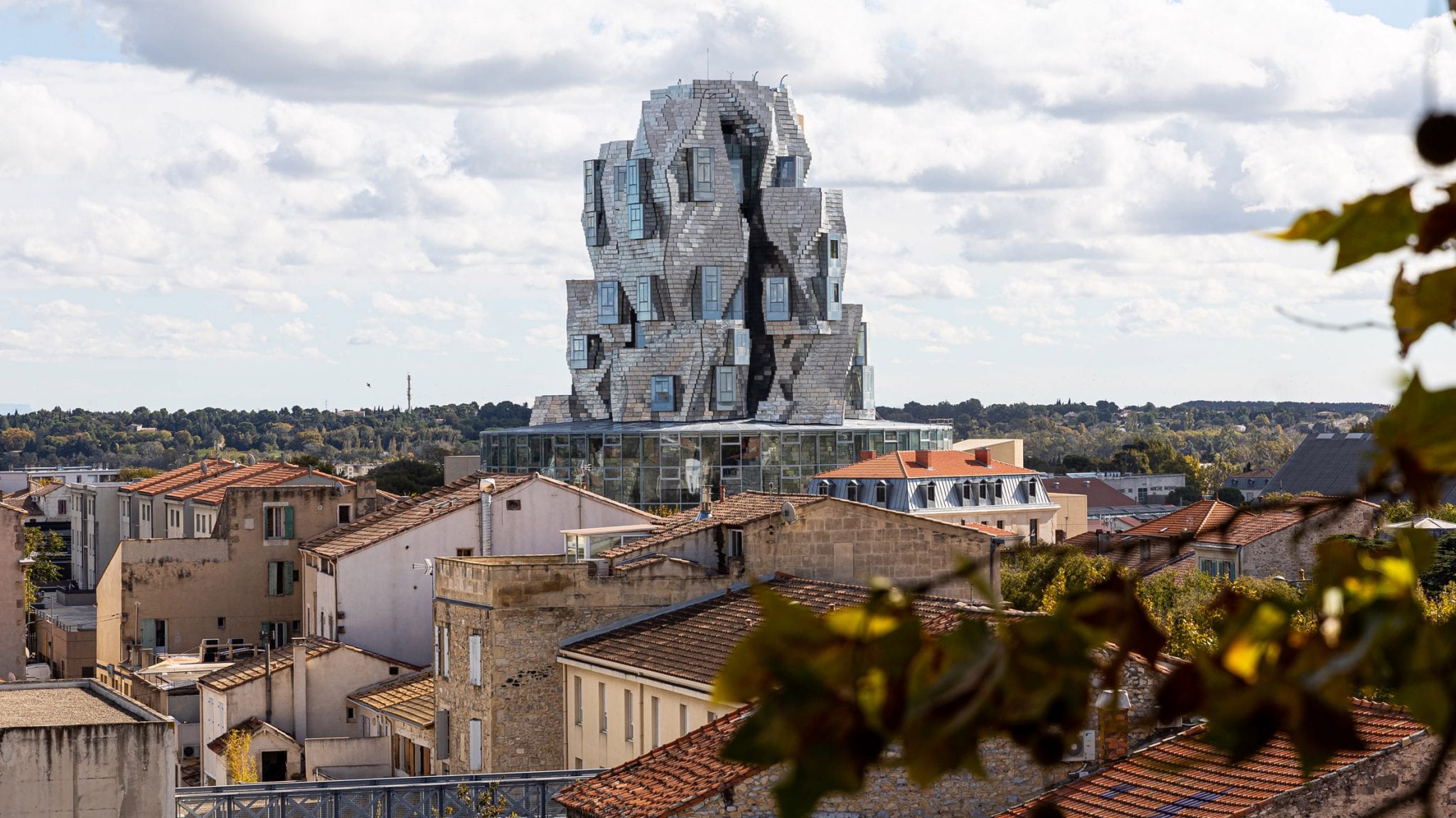
© Adrian Deweerd
The stainless-steel-clad Tower interacts with Arles’ urban, cultural, and natural contexts. Frank Gehry inspired The Tower’s form and materials from the nearby mountains -particularly their representation in Van Gogh’s Starry Night- and the abundance of sunlight in Arles. The central drum-like platform of The Tower reflects the plan of the Arles Amphitheatre that is close to Luma Arles.
“We wanted to evoke the local, from Van Gogh’s Starry Night to the soaring rock clusters you find in the region,” said Frank Gehry.
“The skyline of Arles is populated with towers built from the ancient times to the Middle Ages up to the present,” added Gehry.
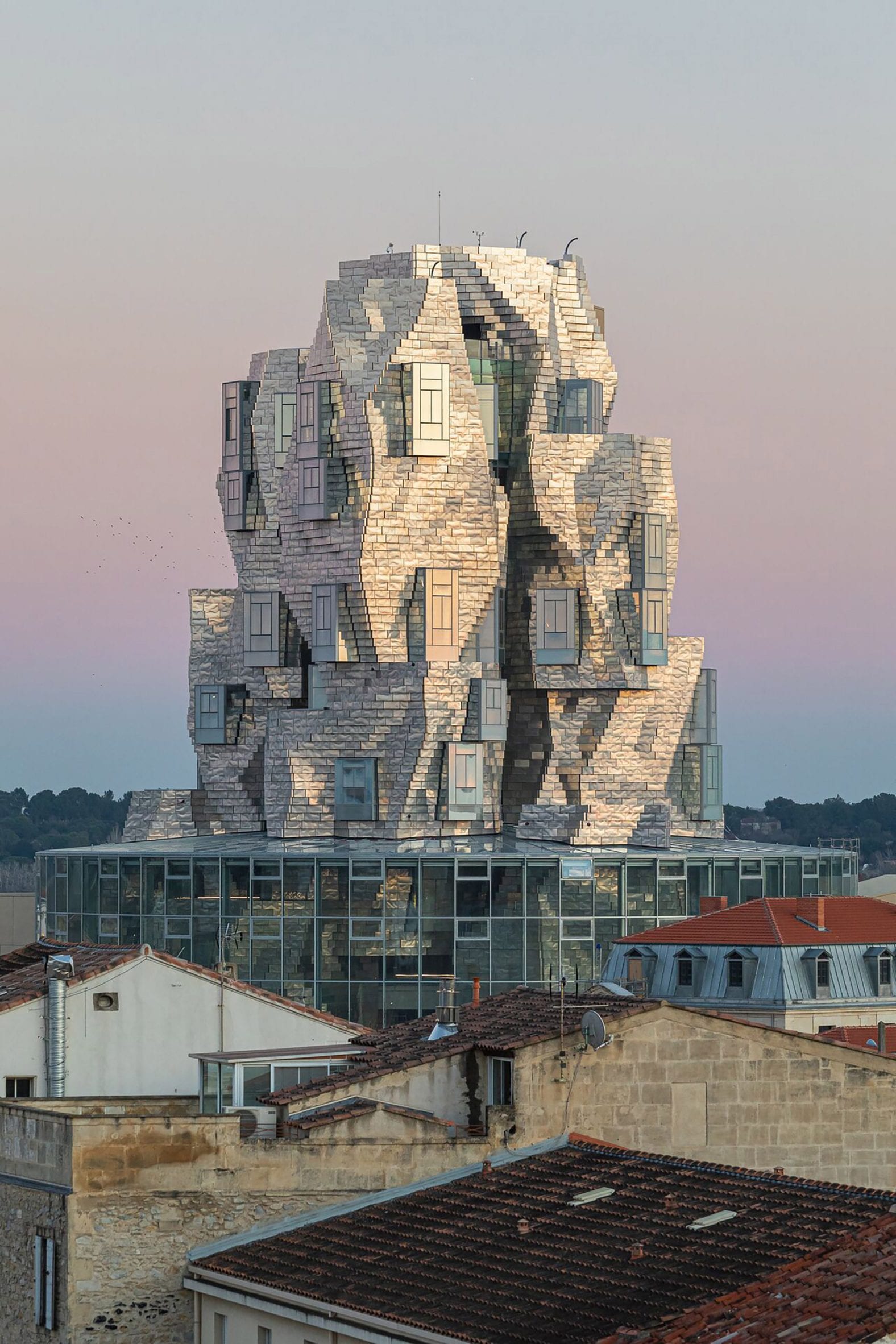
© Adrian Deweerd
The Tower is now the landmark structure and the focal point of Luma’s Arles art campus. It features great spatial flexibility in compliance with Luma’s advisers’ desires. As Gehry stated in an interview with The Art Newspaper, the spaces are all-inclusive, covering the main functions of research, production, display, education, and archiving of art. Each space can be altered to function at its best.
“Classrooms could also be galleries, libraries could be exhibition spaces, and exhibition spaces could be used for events,” said Gehry in the interview with The Art Newspaper.
“The new building will help establish Luma Arles as a significant site among the other landmarks of the city.”
The façade of The Tower comprises a wavering and deconstructed form of 11,000 stainless steel panels carving a respectful stone form – both forms are rising from a cylindrical drum platform. The stone form of The Tower covers the spaces that do not require daylight, including archive rooms, storages, elevators, and mechanical rooms. The choice of stone and cuboid form respects the surrounding historical buildings of Luma’s art campus.
“The drum is both transparent and porous, with walls that open to the surrounding industrial buildings turning it into the central hub of the campus. The building grows out of the center of the drum and is oriented towards the historic center of Arles.”
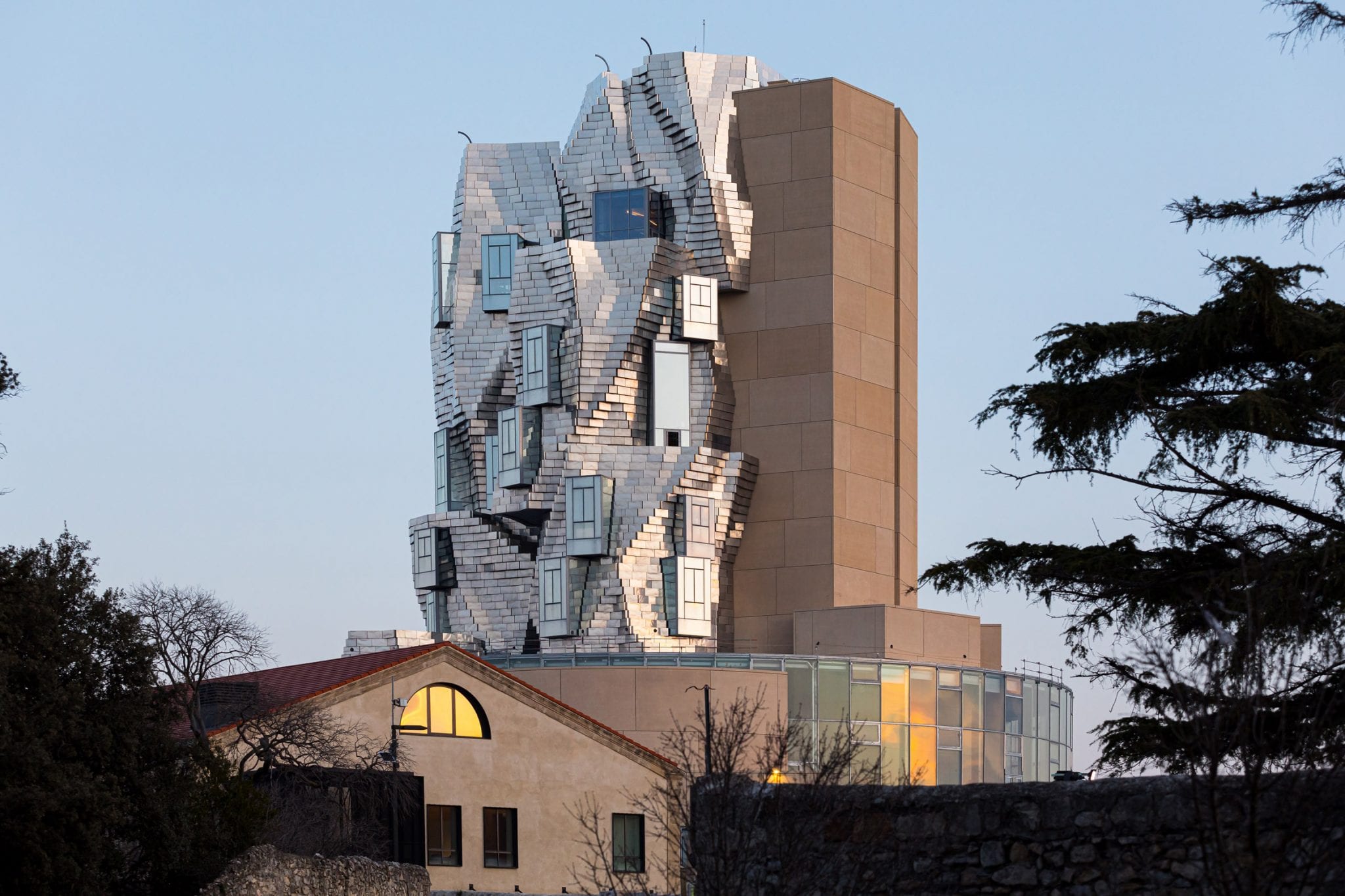
© Adrian Deweerd
The stainless-steel panels are Frank Gehry’s winning card in conveying Van Gogh’s Starry Night sense. Gehry believes in Van Gogh’s saying: “Those who don’t believe in the sun down here are truly blasphemous.” Starry Night captures the shifting of light, stars, clouds, and wind. Each of the 11,000 reflective and opaque stainless-steel panels interacts differently with the sun and the sky, strengthening the painterly quality of The Tower.
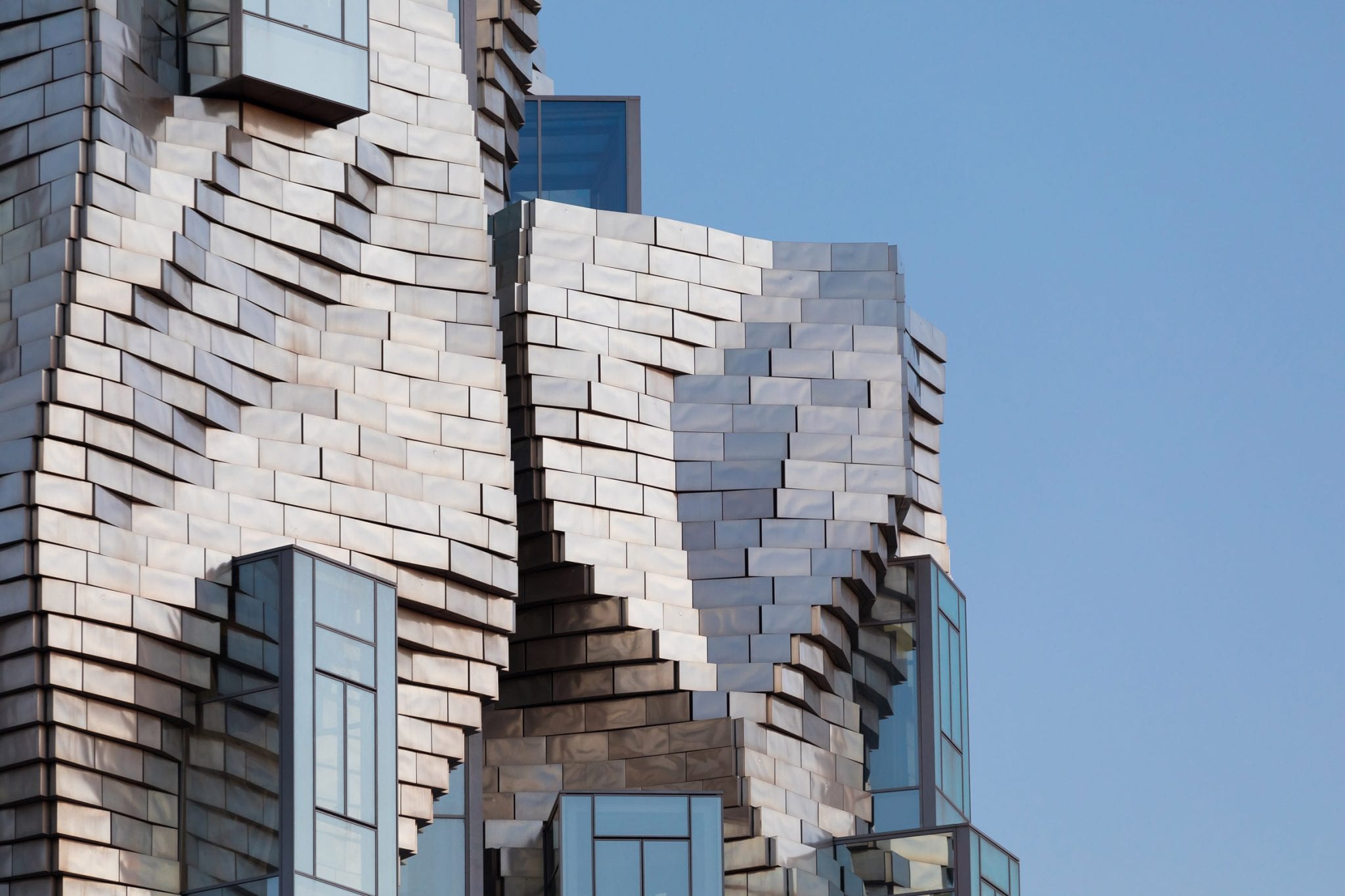
© Adrian Deweerd
“The manner in which Van Gogh rendered Les Alpilles influenced the development of the exterior cladding of the building,” said Gehry.
“The design of the tower seeks to capture the movement of discrete elements across a surface,” he continued.
“This manner of breaking down the surface to visible modules became an important theme in the surface development of the building as it reinforced the idea of a ‘painterly building’.”
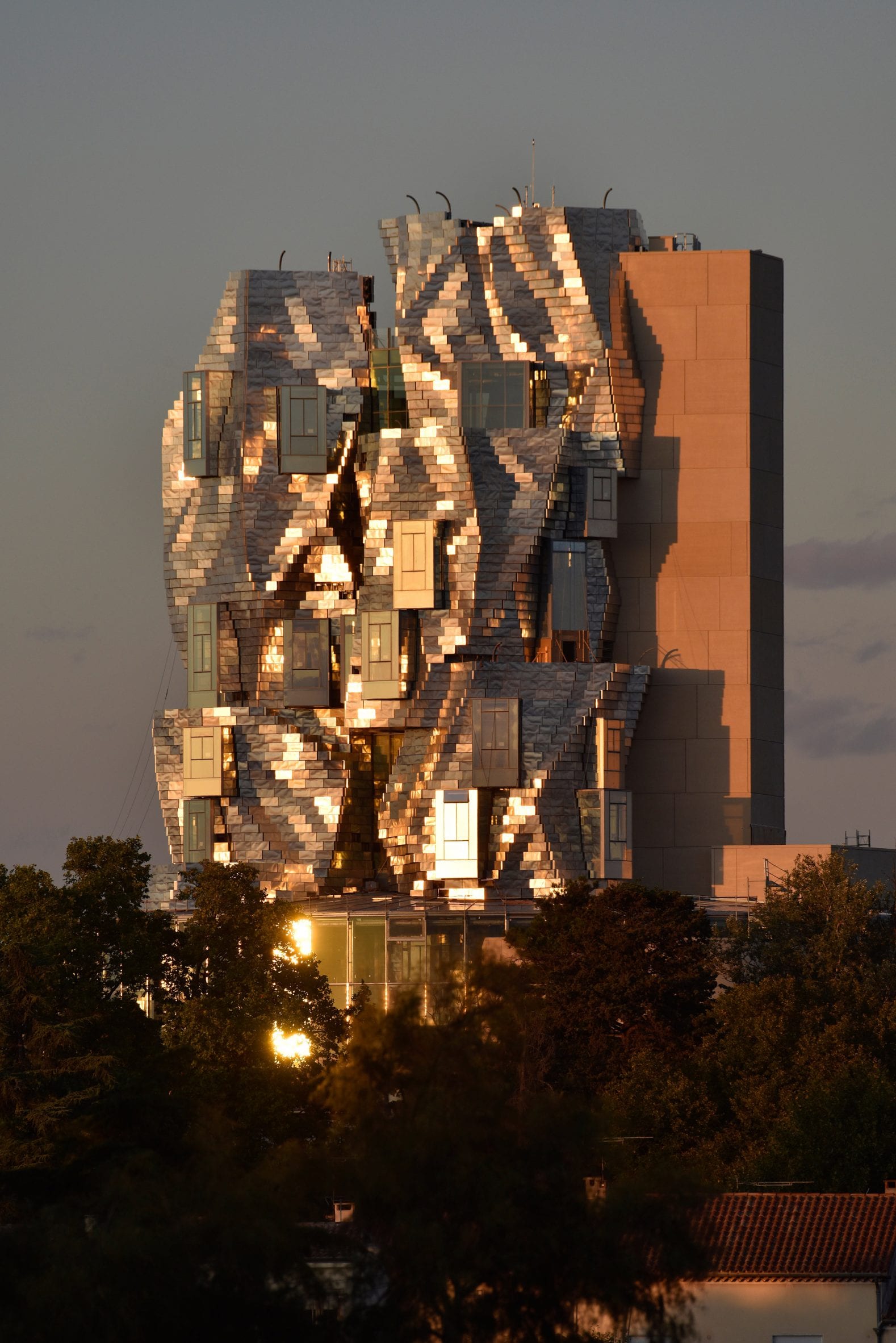
© Hervé Hôte
On a larger scale, Frank Gehry collaborated with several artists and stakeholders. Founder and president of Luma Arles, Maja Hoffman, managed these collaborative processes to enhance the overall experience of the art campus. New York-based Selldorf Architects renovated a series of industrial buildings adjacent to The Tower. While the Belgian landscaper Bureau Ba Smets designed a public park named Parc des Ateliers that bounds the campus.
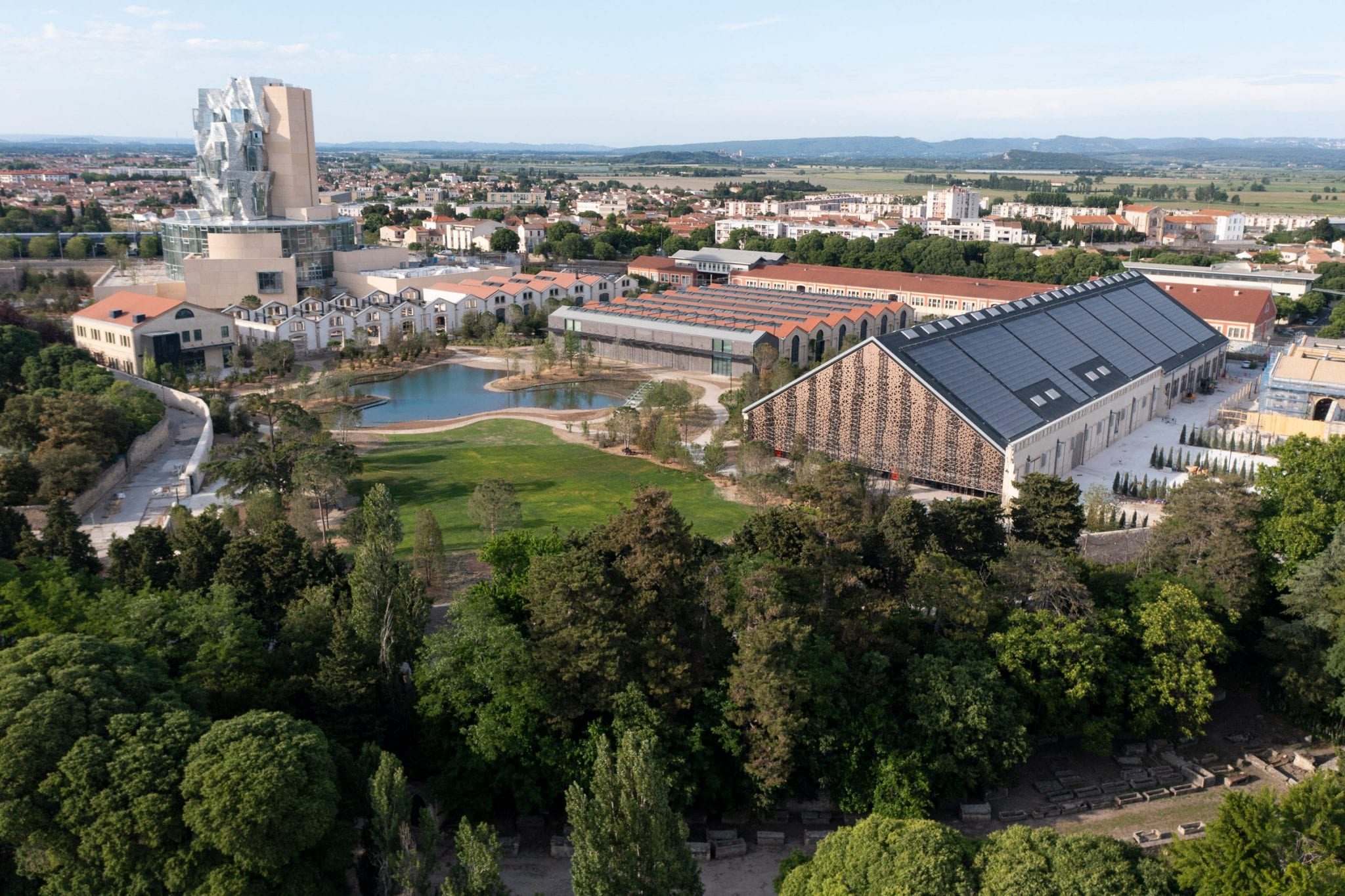
© Remi Benali
“With every space in the complex we seek to create a balance allowing the 19th-century industrial vocabulary to coexist simply with contemporary purpose, all the while creating well-proportioned spaces with controllable natural light and clear circulation,” said Annabelle Selldorf, principal of Selldorf Architects.
The award-winning Canadian American architect is known for his innovative and bold designs that interact with the individual and collective memory of the audience. Here are 9 Things You Did not Know About Frank Gehry!





